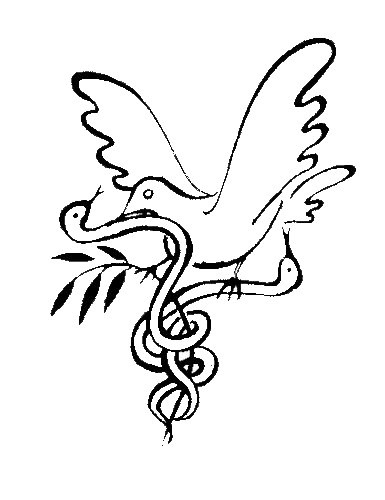September 7, 2011
when networks eat themselves
 Jaron Lanier’s latest provocation, the Local-Global flip, deserves a close watch/read. His contention that the Internet is destroying the middle-class sounds hyperbolic, but demands a response from devout free-culture evangelists.
Jaron Lanier’s latest provocation, the Local-Global flip, deserves a close watch/read. His contention that the Internet is destroying the middle-class sounds hyperbolic, but demands a response from devout free-culture evangelists.
On the surface, the Lanier piece sounds like the familiar alarmist “Robot Nation” tune about robots taking human jobs. But, Lanier raises the stakes by looking at how we have distributed the excess wealth generated by the efficiencies the information age. The global war on the middle class is largely incontestable. Will the future resemble the past, or can we honestly respond to the realities he identifies and design a socio-economy that supports and sustains a middle class?
Jaron’s interview is a bit diffuse, and he often talks as if he is the first to question Internet hype. He is certainly not alone in raising concerns about the darker side of the internet-as-salvation coin. Building on the social/cultural theory of the 19th and 20th centuries, these concerns are absolutely central to critical perspectives on information society. Critical scholarship on these issues abound, and bestselling books such as Code, The Wealth of Networks, The Future of the Internet and How to Stop It, Communication Revolution, The Master Switch, Life, Inc, The Googlization of Everything, The Shallows, and The Net Delusion all take up these issues in one form or another. The 2009 conference on Internet as Playground and Factory conference is still one of the best compilations I am aware of that succinctly captures the exploitive dangers of new networked efficiencies.
Lanier’s focuses intently on the ways in which entrenched power is becoming even more entrenched and powerful using the very same tools that have inspired so much hope.
How Algorithms Literally Shape the World
If you want a vivid illustration of the ways in which the financial sector has begun to leverage networks, check out this jaw-dropping account of how networks and algorithms are literally shaping Wall Street and terraforming the planet. Did you know that brokers are building server farms in the mid-atlantic, equdistant from NY and London to leverage microsecond trading advantages?
No Place to Hide
This summer I also collected more stories of the dark sides of centralized social networking. This is happening now as we become the products and tolerate corporations spying on us all the time. Even if we (think) we have nothing to hide:
- Medication adherence FICO score — A company is collecting pharmacy data, calculating your likelyhood of compliance, and packaging this value into a number that could be used to compute insurance rates, APRs, and mortgage eligibility.
- Social media background checks — Your public exploits are being dug up, analyzed and sold to whoever is curious (future employers, mates, enemies).
- Flyzilla thwarted — With Facebook’s help, the Israeli’s blacklisted over 300 activists and prevented them from entering Israel to protest the occupation. It is not clear if FB cooperated directly, or if they even needed to.
- Harvard’s privacy meltdown -Harvard Researchers Accused of Breaching Students’ Privacy. After breaching the anonymity of their research subjects, the researchers have learned that “the archive is more like plutonium than gold”.
- Crowdsourcing the secret police The flashmob turned into an angry mob during the London riots, as vigilantes tracked down rioters with face recognition software.
The Selfless Flip?
I thought that one of the most interesting parts of Lanier’s interview was his analysis of the local-global flip. When a network becomes so large that it can no longer eject waste outside of itself, it can devour its own tail. Like Walmart impoverishing their own customer base, or the global financial meltdown of ’08, partially caused by banks selling each other toxic assets.
This phase transition reminded me of a series recently published in New Scientist summarizing the latest thinking on the evolution of selfless behavior. Part of their “Instant Expert” series, the articles discuss the progression of evolutionary theory in explaining the pressures underlying the evolution of selfless behavior.
Today’s individuals are yesterday’s groups… For a major evolutionary transition to occur, there has to be a shift in the balance between within-group and between-group selection. A group can only turn into an individual when between-group selection is the primary evolutionary force, and this in turn can happen only when mechanisms evolve that suppress selection within groups. The rules of meiosis, for example, ensure that all genes on the chromosomes have an equal chance of being represented in the gametes. If genes can’t succeed at the expense of each other, then the only way to succeed is collectively as a group. *
Darwin’s problem is encountered at every scale of human society: from the smallest group to the global village, the behaviours that maximise relative advantage within a social unit tend to undermine the welfare of the unit as a whole. Establishing prosociality at a large scale requires a process of selection at that scale – whether a raw process of variation and selection or a more deliberative process of selecting practices by intentional planning. *
Contrary to colloquial shorthand, evolution doesn’t actively select anything. Evolution only guarantees that a particular trait hasn’t killed you yet. Are we witnessing the growing pains of this evolutionary transition?
 Filed by Jonah at 11:46 pm under ethics,freeculture,metaphysics,water
Filed by Jonah at 11:46 pm under ethics,freeculture,metaphysics,water
 1 Comment
1 Comment

